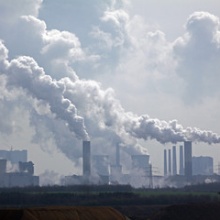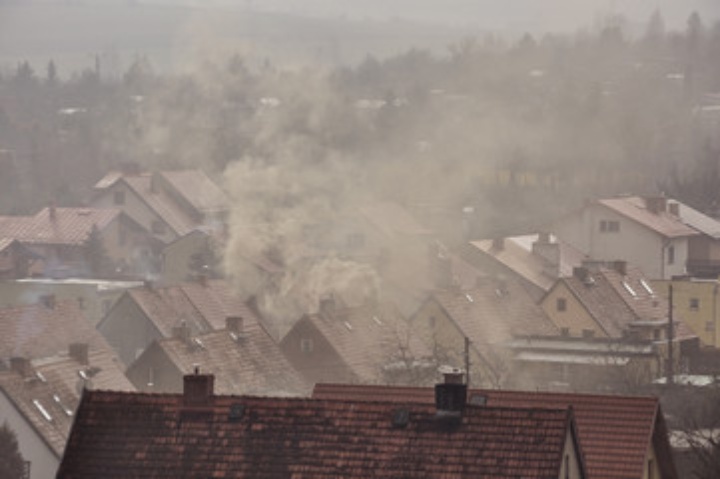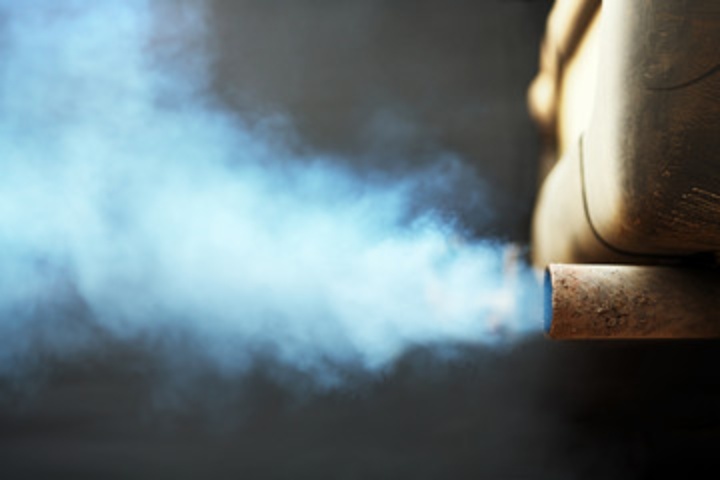Both the municipal authorities and politicians are concerned with the particulate and nitrogen dioxide contamination at the Neckartor in Stuttgart. The measured values are so high that they could be harmful to health. But, who actually spends all their time out there in the outdoors? In the context of an EU research project, Professor Rainer Friedrich and his team from the University of Stuttgart's Institute of Energy Economics and the Rational Use of Energy (IER) are looking into which contaminants people are exposed to in places where they spend the majority of their lives. Their findings show that action is not only required with respect to road traffic.
As Rainer Friedrich explains, a person's health is primarily influenced by two factors: the genome, i.e., hereditary factors, and the exposome which encompasses the totality of human environmental exposures. “Our assumption”, he says, “is that long-term exposures throughout one's entire life, and not short-term peak exposures, are responsible for chronic illnesses and a shortened life expectancy”. This is the starting point for the EU’s HEALS (Health and Environment-wide Associations based on Large population Surveys) project. The objective is to uncover potential links between environmental factors and ill health. Friedrich and two colleagues are contributing to the research project which involves participation from 30 partner organizations, by providing the calculation base for the exposome. “We're responsible for analyzing data and developing models with which health impairments due to noxious substances can be calculated for demographic groups with specific characteristics”, Friedrich explains, “for example gender, age, profession or place of residence. That's something completely new!” All previous studies have taken a single year of pollution into account at the most and have restricted themselves to concentrations in the outside air.
Our assumption is that long-term exposures throughout one's entire life, and not short-term peak exposures, are responsible for chronic illnesses and a shortened life expectancy.
Prof. Rainer Friedrich, University of Stuttgart's Institute of Energy Economics and the Rational Use of Energy (IER)
To arrive at their findings, the team uses basic data from databases that provide information on which demographic groups spend how much time at work, at home and in the car, and what they do there. The team has produced a time-activity matrix for Europe from this data. “We want to estimate the exposure of everyone characterized by each respective profile for their elapsed lifetimes and also prepare scenarios for the future”, says Friedrich. To achieve this, the IER team correlates the time-activity matrix with the noxious substance concentrations for the various locations, and not just for particulate matter and nitrogen dioxide, but also for ozone, heavy metals and electromagnetic radiation.
Outdoor sources
It was found that some 60 per cent of the most toxic of these noxious substances – particulate matter (PM) – with a diameter of 2.5 μm otherwise known as PM2.5, comes from outdoor air sources, primarily from road traffic but also the fumes from wood firing. In addition, manure and fertilizers used in agriculture produce ammonia emissions and, thus, secondary particulate matter. The most significant indoor sources, on the other hand, are passive smoking followed by frying food as well as operating wood burning stoves and burning candles and incense sticks.
Indoor sources
Using the methodology described, the researchers were able to calculate lifetime exposures to PM2.5. The rapid economic growth in the post-war era went hand-in-hand with a significant increase in particulate matter emissions and precursor gasses, which form particulates in the atmosphere, a trend, which was only reversed in the 1980s. After 1990, exposure to particulate matter declined significantly due to the reunification of Germany in conjunction with the collapse of certain sections of the heavy industry sector as well as more stringent limit values for air pollutant emissions, but also no smoking rules in internal spaces and voluntary non-smoking at home. Since its zenith in the 1980s, exposure to PM2.5 has almost halved.
Those who die before their time”, says Friedrich, “lose an average of ten years of life
Rainer Friedrich
Life expectancy shortened by seven months
The results form the basis for the actuarial calculation. For instance, the life expectancy for a man who is currently 70 years old and whose exposome includes PM2.5 is shortened by an average of seven years plus-minus three months, if one accepts the concentration– response relationship for adults published by the WHO. Moreover, there is a direct proportional relationship between the lost life expectancy and the life-long exposure to particulate matter. “Those who die before their time”, says Friedrich, “lose an average of ten years of life”. He goes on to explain that, because the air is less polluted now than it was between the 1960s and ‘80s, things are looking better for anyone born after 1970. Their life expectancy is shortened by less than half of today’s 70-year-olds. From the researcher’s point of view, therefore, it makes more sense to reduced long-term average values than to avoid short-term, peak loads. Reduction strategies should also take account of indoor sources: smoking in the house should be avoided, for example and the extractor hood should be switched on during frying.
Daniel Völpel





